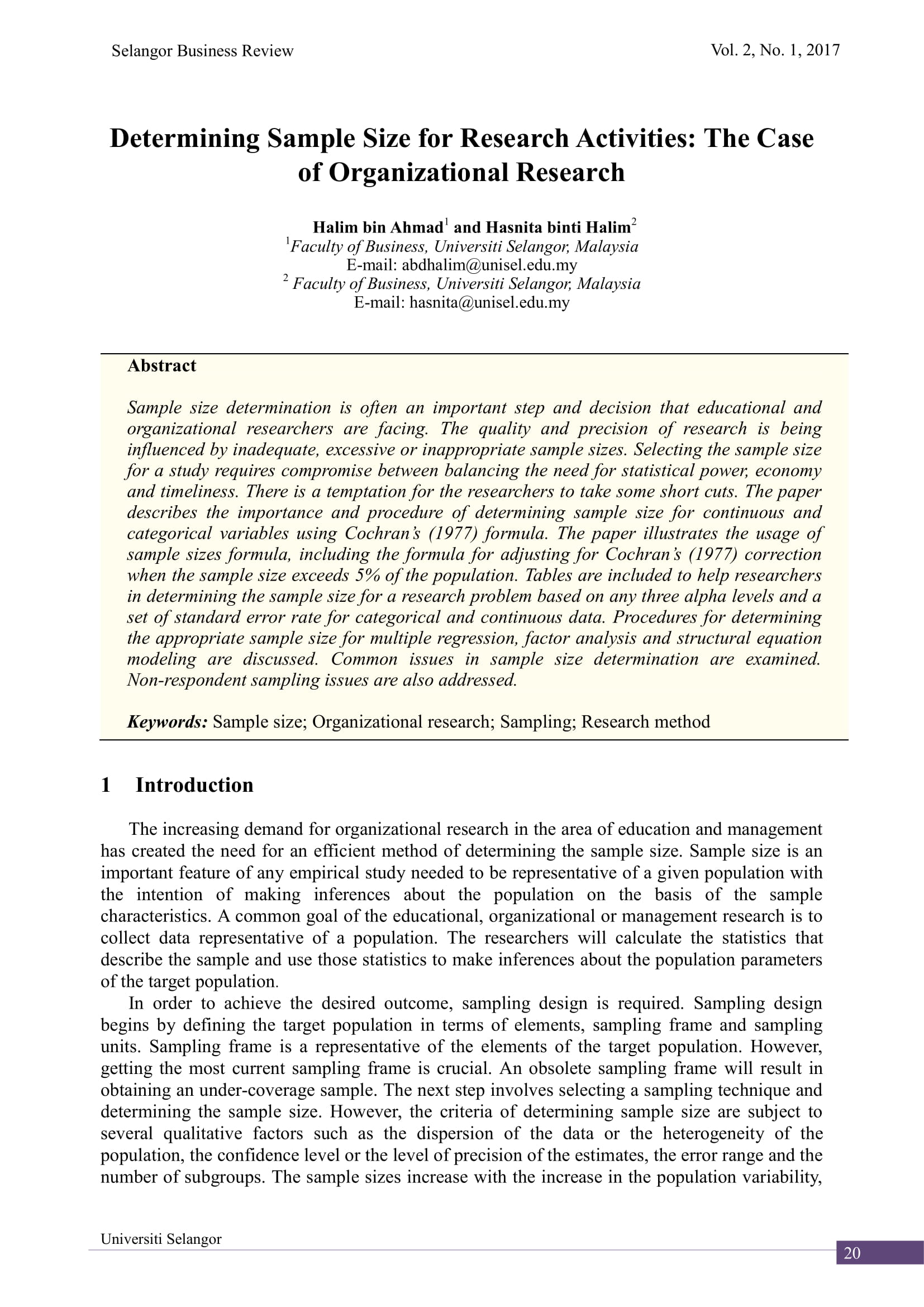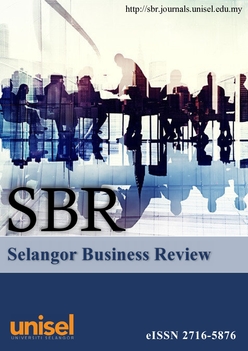Determining Sample Size for Research Activities
The Case of Organizational Research
Abstract
Sample size determination is often an important step and decision that educational and organizational researchers are facing. The quality and precision of research is being influenced by inadequate, excessive or inappropriate sample sizes. Selecting the sample size for a study requires compromise between balancing the need for statistical power, economy and timeliness. There is a temptation for the researchers to take some short cuts. The paper describes the importance and procedure of determining sample size for continuous and categorical variables using Cochran’s (1977) formula. The paper illustrates the usage of sample sizes formula, including the formula for adjusting for Cochran’s (1977) correction when the sample size exceeds 5% of the population. Tables are included to help researchers in determining the sample size for a research problem based on any three alpha levels and a set of standard error rate for categorical and continuous data. Procedures for determining the appropriate sample size for multiple regression, factor analysis and structural equation modeling are discussed. Common issues in sample size determination are examined. Non-respondent sampling issues are also addressed.






 3,026
3,026 2,412
2,412 1,466
1,466